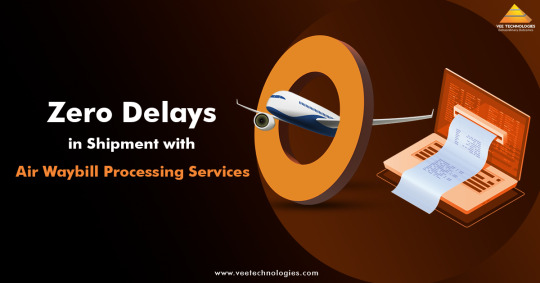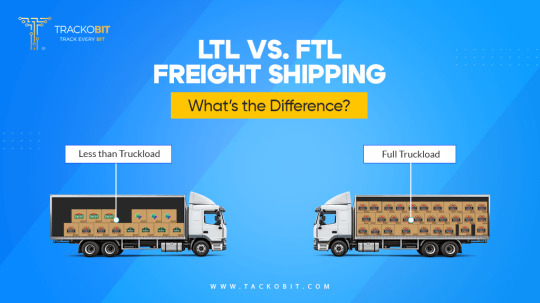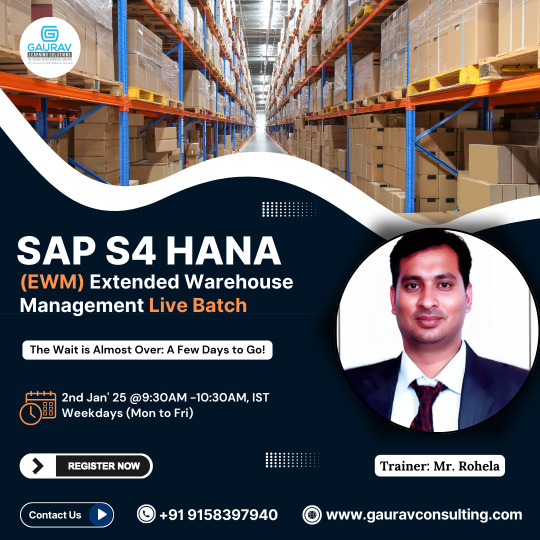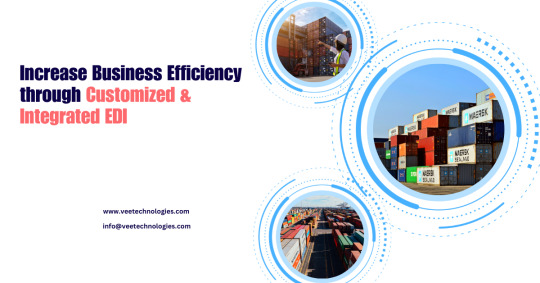#LogisticsOptimization
Explore tagged Tumblr posts
Text
Optimizing Logistics Operations with Data Integration

#LogisticsOptimization#DataIntegration#SmartLogistics#SupplyChainInnovation#FleetManagement#DigitalLogistics
0 notes
Text
Maximizing Warehouse Efficiency: Strategic Positioning of Material Handling Equipment
Warehouse efficiency isn't just a day-to-day goal in this competitive business environment—it's a key competitive advantage. While most facility managers are focused on replacing equipment or implementing new software programs, the best and most underused tactic may be strategic positioning of material handling equipment. How and where you place your forklifts, pallet jacks, and other gear can make an enormous difference in productivity, safety, and your bottom line.

The Hidden Costs of Suboptimal Equipment Placement
If material handling equipment is installed where access is difficult, the ramifications are far more extensive than mere aggravations. Turn to these ramifications:
- More travel time: Employees traveling long distances to locate equipment translates directly into wasted production time.
- More energy consumption: Equipment idling or unnecessary traversing of the facility wastes fuel and battery life.
- More maintenance cost: Excess movement subjects equipment to greater wear and tear.
- Inefficient use of space: Equipment improperly located can preclude useful storage or working areas.
- Safety risks: Inappropriately located equipment can create risks and increase the potential for accidents.
It's possible for an average-sized warehouse to waste thousands of productive hours annually simply due to inefficient equipment placement. Let's examine how strategic positioning can transform these issues into benefits.
Key Principles for Strategic Equipment Placement
1. Activity-Based Positioning
The rule of thumb for equipment placement is to put resources where they're needed most. This involves understanding your operation's workflow patterns:
- Position forklifts near high-picking volumes or receiving docks with high volumes of heavy loads
- Position pallet jacks in areas of frequent light-to-medium load movement
- Position specialized equipment (reach trucks, order pickers) in their primary places of use
- Designate creating certain "home bases" for gear in the locations that it is utilized most frequently.
Best-functioning warehouses use an area-based equipment allocation system where each working zone will have adequate equipment readily available without redundancy.
2. Traffic Flow Analysis
It is extremely vital to be aware of movement patterns throughout your facility for optimal positioning:
- Map primary travel routes for equipment and individuals
- Identify high-traffic areas and bottlenecks
- Position equipment to minimize cross-traffic and collision risks
- Position equipment paths away from pedestrian paths wherever feasible.
Detailed traffic flow analysis typically reveals the shocking inefficiencies that can often be resolved by smart equipment relocation, in most instances, obviating the need to purchase more equipment.
3. Factors to Do with Charging and Maintenance
For electric-drive equipment, charging station locations need thoughtful consideration:
- Position charging areas close to natural break points in daily workstreams
- Don't place charging points in prime operating area
- Have distributed charging points rather than one location
- Have adequate ventilation and safety clearances around charging locations
Similarly, maintenance areas need to be placed so as to minimize equipment downtime and travel distance for servicing regular needs.
4. Seasonal and Operational Variability
Warehouse operations are not uniform throughout the year. Strategic location of equipment must take into account:
- Seasonal variation in volume
- Special promotion seasons
- Inventory profile fluctuations
- New product launches
The most effective operations create a variety of equipment placement solutions to meet these differences, with defined guidelines for switching between them as business requirements change.
Optimal Placement Implementation Strategies
Begin with Data, prior to rearranging your equipment, collect quantitative data to guide your decisions:
- Monitor equipment use rates by zone
- Measure operators' average travel distances
- Review pick density maps to find high-activity zones
- Review area-specific safety issues from accident reports
This evidence-based approach does not rely on assumption or past operating practices to make decisions.
Pilot Program Approach
Rather than changing an entire facility at one time, attempt to phase it in:
1. Select a starting point for optimizing one zone or process
2. Specify clear success criteria
3. Adjust equipment placement
4. Assess outcome after 30-60 days
5. Iterate from results
6. Roll out to additional zones
This method allows for continuous improvement and minimizes disruption to existing operations.
Equipment Tracking and Accountability
Even a well-designed placement plan fails in the absence of strict adherence. Consider implementing:
- Visual management systems (floor marking, signage)
- Equipment check-in/check-out procedures
- Operator responsibility systems
- Continual auditing of equipment location
- Measurements of performance based on proper equipment return and location.
Some operations have successfully implemented RFID or GPS tracking systems to monitor equipment location in real-time, allowing constant optimization of placement strategies.
Real-World Results
All organizations employing strategic equipment placement report consistent results:
- 15-20% reduction in non-productive travel time
- 10-15% reduction in fuel/power consumption on equipment
- Reduced equipment fleet requirements
- Reduced safety incidents related to equipment movement
- Improved utilization of space throughout the facility
- Improved operator satisfaction and reduced fatigue
One of the Midwest's largest warehouse distribution centers recently reported more than $175,000 per year in cost savings following a comprehensive equipment placement optimization, with ROI within four months.
Beyond Equipment: The Complete Approach
Strategic equipment placement is an effective tool, but it is most valuable when accompanied by complementary methods:
- Ideal slotting and inventory positioning
- Efficient pick path design
- Accurate selection of equipment for specific tasks
- Comprehensively integrated operator training
- Regular readjustment and review of placement plans as operations evolve
Conclusion
Strategic placement of equipment is one of the most cost-effective methods for enhancing the productivity of a warehouse. Unlike many improvement initiatives that entail significant capital outlays, equipment placement optimization is often budget-neutral but delivers dramatic and rapid returns.
By applying data-driven placement methods, tracking performance, and regularly refining your approach, you can convert equipment placement into a powerful weapon of competitive gain. The result is a more efficient, safer, and more profitable operation—all validating that location, in warehouse management, does indeed matter.
#WarehouseEfficiency#MaterialHandling#LogisticsOptimization#WarehouseManagement#SupplyChain#WarehouseLayout
0 notes
Text
0 notes
Text
Reduce Manual Workload and Eliminate Errors with Air Waybill Processing Services

An air waybill is a legally binding contract between the shipper and the carrier. It offers you multiple benefits like acting as a receipt for the goods shipped, evidence of the contract of carriage, etc. This is why air waybill processing services should be fully utilised by businesses.
Explore More: https://www.veetechnologies.com/industries/logistics/air-waybill-processing.htm
#AirWaybillAutomation#ErrorFreeShipping#AutomatedLogistics#LogisticsOptimization#SupplyChainTech#SeamlessShipping#WaybillSolutions#CargoProcessAutomation#LogisticsInnovation#TechForShipping#EfficientAirCargo#PaperlessWaybill#VeeTechnologies
0 notes
Text
Discover the Top 10 Inland Freight Bill Auditing Experts Saving Businesses Millions

Efficient freight bill auditing is crucial for businesses to optimize logistics costs, identify discrepancies, and ensure accurate invoicing. Companies that provide Inland Freight Bill Auditing in USA help streamline freight management by eliminating billing errors and enhancing operational efficiency. Here’s a list of Best Inland Freight Bill Auditing Companies that provide top-notch Inland Freight Bill Auditing Services in the USA.
1. Vee Technologies
Vee Technologies leads the industry with its comprehensive Inland Freight Bill Auditing Services in the USA. The company leverages advanced analytics, AI-driven auditing tools, and a team of logistics experts to ensure accurate freight cost validation. With a focus on cost reduction and efficiency improvement, Vee Technologies is a trusted partner for many global businesses.
2. Cass Information Systems
Cass Information Systems is a well-known freight audit and payment provider that helps businesses manage logistics expenses effectively. Their robust auditing solutions ensure invoice accuracy and compliance, making them a key player in the industry.
3. CT Logistics
With over a century of experience, CT Logistics offers reliable freight bill auditing and payment services. Their customizable auditing solutions help businesses detect billing errors and enhance supply chain efficiency.
4. nVision Global
nVision Global provides a cloud-based freight audit solution that ensures transparency and accuracy in freight billing. Their AI-powered platform helps businesses gain real-time insights into logistics expenses.
5. ControlPay
ControlPay specializes in freight audit and payment solutions for enterprises looking to improve financial control over transportation costs. Their expertise in inland freight auditing helps businesses reduce overpayments and improve cost efficiency.
6. U.S. Bank Freight Payment
U.S. Bank Freight Payment offers automated freight bill auditing and payment solutions that help businesses optimize freight spending while ensuring compliance with carrier contracts.
7. FreightWise
FreightWise provides detailed invoice auditing and cost analysis services to help companies identify overcharges and discrepancies. Their data-driven approach enhances cost savings and logistics performance.
8. TriumphPay
TriumphPay offers a secure and efficient freight payment and auditing system that ensures transparency and accuracy in freight transactions. Their auditing solutions help businesses maintain financial accuracy in logistics.
9. Green Mountain Technology
Green Mountain Technology delivers advanced freight bill auditing solutions with a focus on cost optimization and analytics-driven decision-making. Their auditing services help companies improve carrier performance and minimize billing errors.
10. Data2Logistics
Data2Logistics specializes in freight bill auditing and analytics, providing businesses with insights to optimize transportation costs. Their audit solutions help eliminate errors and improve financial accuracy in freight transactions.
Conclusion
Choosing the right partner for Inland Freight Bill Auditing in USA can significantly impact cost savings and operational efficiency. These Best Inland Freight Bill Auditing Companies ensure error-free invoicing, reduce overcharges, and enhance logistics management. Among them, Vee Technologies stands out as the industry leader, offering exceptional Inland Freight Bill Auditing Services tailored to businesses' unique needs.
#FreightAuditExperts#InlandFreight#CostSavings#LogisticsEfficiency#FreightBilling#AuditSolutions#SupplyChainSavings#TopFreightAuditors#ExpenseManagement#LogisticsOptimization
0 notes
Text
Как оптимизировать затраты на логистику в малом бизнесе — советы TR
По мнению экспертов TR, грамотное управление логистикой в малом бизнесе — это реальная возможность сократить расходы и существенно повысить конкурентоспособность. Даже небольшие компании могут успешно оптимизировать логистику, если подойдут к этому вопросу комплексно. Сегодня мы разберём, как это сделать максимально эффективно, не переплачивая за лишние услуги и не теряя клиентов.

Анализ текущей логистики
Прежде чем вводить изменения, следует понять, какие процессы требуют улучшения. Сначала нужно оценить текущую логистическую цепочку: сколько времени уходит на доставку товаров, какие маршруты используются и где происходят основные задержки. Например, если доставка в удаленные районы регулярно задерживается, стоит пересмотреть маршруты или выбрать другого перевозчика.
По словам экспертов TR, полезно оценить и эффективность хранения товаров на складе. Например, если товары долго задерживаются на складе, это приводит к лишним затратам на аренду и охрану. Регулярный мониторинг спроса поможет избежать таких проблем и оптимально спланировать закупки, чтобы товар не «зависал».
Оптимизация маршрутов доставки и выбор транспорта
Одним из эффективных методов оптимизации логистики является пересмотр маршрутов и способа доставки. Нередко компании, особенно начинающие, используют один и тот же способ доставки для всех клиентов, не задумываясь о том, что разные ситуации требуют разных подходов. Например, доставка товаров небольшими партиями внутри города может быть организована с помощью курьеров на велосипедах, что быстрее и дешевле, чем использование автомобилей.
Также, по словам аналитиков TR, важно использовать современные инструменты маршрутизации. Онлайн-сервисы, которые строят оптимальный маршрут, позволяют учитывать пробки, погоду и загруженность дорог. Это позволяет не только экономить на топливе, но и своевременно доставлять заказы клиентам, улучшая их лояльность.
TR о важности автоматизации логистики
Автоматизация — это ключевой фактор для снижения логистических затрат и повышения эффективности бизнеса. С��временные программные решения помогают автоматизировать рутинные задачи, такие как учёт товаров, планирование маршрутов и обработка заказов. Автоматизация позволяет сократить время выполнения операций и значительно уменьшить вероятность человеческих ошибок.

По словам аналитиков TR, внедрение CRM-системы, интегрированной с логистическим модулем, позволяет оперативно обрабатывать заказы и снижать ошибки при комплектовании товара. Кроме того, автоматизация помогает сократить количество сотрудников, занятых на монотонной работе, и перенаправить их на решение более важных задач.
Грамотное управление запасами
Правильное управление запасами — один из основных способов сократить издержки. Избыточные запасы замораживают деньги компании, а недостаточные приводят к перебоям в поставках. Хорошим решением станет переход на систему регулярного заказа минимальных партий, основанных на реальном спросе и цикличности потребления, считают эксперты TR.
Например, компания, торгующая сезонными товарами, должна регулярно пересматривать объемы закупок, чтобы не закупать лишнее в периоды спада спроса. Система периодического планирования заказов позволяет оперативно корректировать объёмы поставок и избегать лишних расходов на хранение и утилизацию нереализованного товара.
Сотрудничество с логистическими операторами
Для малых компаний выгодным решением может стать передача отдельных логистических процессов на аутсорсинг. Это особенно актуально, если у компании недостаточно ресурсов или опыта для самостоятельной организации эффективной логистики. Аутсорсинг позволяет получить доступ к опыту и инфраструктуре крупных логистических операторов, не инвестируя крупные суммы в собственный транспорт или склады.
Например, небольшая компания по продаже сувениров может не содержать собственный склад, а использовать складские мощности логистического оператора. Это поможет сэкономить на аренде помещения и оплате труда сотрудников, считают эксперты TR.
#LogisticsOptimization#SmallBusiness#CostReduction#Logistics2025#BusinessAutomation#InventoryManagement#EfficientSupplyChain#LogisticsOutsourcing#BusinessTips#TRAnalytics
0 notes
Text
Maximize Delivery Speed with InTargos Logistics Services
In today’s fast-paced eCommerce world, delivery speed can make or break customer satisfaction. InTargos Logistics offers a trustworthy solution to enhance your delivery process, making sure your shipments reach customers quickly and efficiently. With their cutting-edge tracking systems and wide-reaching network, InTargos Logistics helps simplify your logistics operations, reducing delays and optimizing routes.
Using InTargos Logistics in your shipping plan helps you deliver orders faster, making your customers happier and improving your reputation. Whether you're sending packages nearby or across the world, InTargos ensures they arrive on time with little trouble.
InTargos Logistics has a strong system that lets you track your shipments in real time, keeping both you and your customers updated every step of the way. Working with InTargos Logistics is a smart choice to stay ahead in a fast-moving market. By using their services, you can speed up your deliveries and keep your customers satisfied.
#intargoslogistics#efficientshipping#logisticsoptimization#realtimetracking#fasterdeliveries#ecommercesolutions#shippingmadeeasy#costeffectiveshipping#businessgrowth#shippingefficiency#logisticsmanagement#courierservices
0 notes
Text

Cost-Effective and Efficient 🚚📦 Freight Forwarding Software 💻🌍
🚀 Unlock actionable insights now! Schedule your demo today! https://calendly.com/fresatechnologies
For more queries please visit below link 👇 www.fresatechnologies.com/products/fresa-gold
For further inquiries, please contact us : [email protected]
#Fresa |#Freightsolutions |#Freightforwarding |#Import |#FresaGold |#ERPSoftware |#G2Awards |#FresaGoldERP |#SoftwareAwards2024 |#CustomerChoice |#BestCustomerSupport |#HighlyRated |#TopTrending |#EasyUsability |#FreightForwardingSoftware |#CustomerSatisfaction |#shipping |#LogisticsSolutions |#SupplyChainManagement |#EfficientShipping |#LogisticsSoftware |#ShippingSolutions |#CostEffectiveLogistics |#FreightManagement |#ShippingSoftware |#LogisticsInnovation |#SupplyChainEfficiency |#LogisticsOptimization
0 notes
Text
Silicon Safepack Pvt. Ltd. as an industrial packaging solution provider and logistics service provider
"At Silicon Safepack Pvt. Ltd., we deliver innovative industrial packaging solutions that ensure product safety and optimize logistics efficiency, making us a trusted partner for businesses worldwide."
"From protective packaging to seamless logistics services, Silicon Safepack Pvt. Ltd. stands at the forefront of safeguarding products while driving operational excellence."
"Experience unparalleled protection and efficiency with Silicon Safepack Pvt. Ltd., your go-to industrial packaging solution provider and logistics expert."
"Secure, sustainable, and innovative – that's what Silicon Safepack Pvt. Ltd. brings to industrial packaging and logistics."
"Silicon Safepack Pvt. Ltd.: Where smart packaging meets streamlined logistics to power your business growth."

#PackagingThatProtects#AutomotivePackaging#ExportPackaging#InnovativePackaging#SupplyChainManagement#CustomPackagingSolutions#EcoFriendlyPackaging#PackagingForManufacturing#ReliablePackagingPartner#LogisticsOptimization
0 notes
Text
📦 Optimizing Freight Management: Understanding Load Planning
Managing freight involves a multitude of processes, each presenting opportunities for optimization, cost reduction, and enhanced operational efficiency.
In today’s logistics landscape, implementing modern technologies is crucial for increasing supply chain efficiency, whether it pertains to routing, tracking, warehousing, or addressing other industry-specific challenges. 🚚 💼
🔍 What is Load Planning?
Load planning, also known as load optimization, is the process of consolidating multiple shipments and arranging freight to utilize the capacity of trucks, railcars, pallets, and other types of containers in the most efficient manner.
The primary goals of load planning include:
Reducing Transportation Costs
By maximizing the use of available space, companies can minimize the number of vehicles or containers needed to move freight, leading to significant cost savings. 💰
Preventing Cargo Damage
Optimizing shipments helps ensure that cargo is loaded securely and appropriately, reducing the risk of damage during transit. 📦 🛡️
Saving Time
Efficient load planning reduces loading and unloading times, streamlining operations and enhancing productivity. ⏳
Increasing Customer Satisfaction
Timely and safe deliveries lead to improved customer experiences and satisfaction, which are vital in today’s competitive market. 🌟
🌐 The Complexity of Freight Movement
The process of moving freight is inherently complex, involving various interactions among parties within the supply chain.
The length of the supply chain can range from a straightforward manufacturer-carrier relationship to a more intricate multimodal, multi-leg journey.
This may include several intermediaries, such as:
⭐ Manufacturers
⭐ Wholesalers
⭐ Retailers
⭐ Freight Forwarders
Additionally, the logistics process may involve reloading at various ports, terminals, or distribution centers, further complicating load planning efforts.
Creating an optimal cargo configuration is essential for all stakeholders in the logistics industry—essentially anyone involved in loading multiple items.
🚚 Two Main Scenarios in Load Planning
Depending on how containers or trucks are filled, two primary scenarios exist in load planning:
1. Full Truckload (FTL)
In this scenario, a single shipment occupies the entire truck's capacity.
This method is often more cost-effective for large shipments, as it reduces handling and transit times.
The focus here is on maximizing the weight and volume of the cargo to ensure efficient use of the truck’s capacity.
2. Less Than Truckload (LTL)
This scenario involves consolidating multiple smaller shipments from different customers into one truck.
While this method allows for more flexibility and can be cost-effective for smaller loads, it requires careful planning to ensure that all shipments are loaded efficiently and securely without causing damage or delays.

Related: Navigating Full Container Loads (FCL) & Full Truckloads (FTL) in Freight Management
💡 How Software Solutions Enhance Load Planning
To navigate the complexities of load planning and address the “empty space problem” in logistics, many companies are turning to software solutions.
These technologies streamline the load planning process by:
Utilizing Advanced Algorithms
Software can analyze cargo dimensions, weight, and compatibility to create optimal load configurations that maximize space utilization.
Integrating Real-Time Data
Access to real-time information allows logistics managers to make informed decisions quickly, adjusting load plans based on current conditions.
Automating Processes
Automation reduces manual calculations and coordination efforts, minimizing human error and increasing efficiency.
Facilitating Scenario Analysis
Software enables users to run different loading scenarios, helping to identify the best strategies for maximizing cargo space.
📈 Conclusion
In summary, load planning is a critical aspect of freight management that can significantly impact transportation costs, cargo safety, and customer satisfaction.
By leveraging modern software solutions, logistics companies can optimize their load planning processes, effectively address the complexities of freight movement, and ultimately enhance their overall supply chain efficiency.
Let’s embrace the future of logistics with smarter, more efficient load planning! 🚚 💡
0 notes
Text

Hurry up! Only a few days left for the batch to start!
Ready to take your warehouse and logistics management skills to the next level? Our SAP EWM training is your gateway to mastering this critical area of the supply chain. Learn how to streamline warehouse processes, improve logistics operations, and harness the power of SAP to drive efficiency and growth.
📅 Start Date: 2nd January 2025 ⏰ Time: 9:30 AM - 10:30 AM IST 🗓 Training Days: Weekdays (Mon-Fri) 💻 Mode: Online 👨🏫 Trainer: Mr. Rohela 📆 Duration: 3.5 Months
Why Enroll in This Course? ✅ Interactive Live Sessions with expert trainer Mr. Rohela ✅ Comprehensive Training on core SAP EWM functions ✅ Real-World Applications to enhance your practical skills and career prospects
Take the next step in your professional journey and become proficient in SAP EWM. This course will provide you with the tools and knowledge to excel in the logistics and warehouse management industry.
🔗 Register Now: https://www.gauravconsulting.com/.../sap-ewm-online-training
Don’t miss out! Elevate your career and unlock exciting job opportunities with SAP EWM.
For more details or inquiries, reach out to us: 🌐 Website: www.gauravconsulting.com 📧 Email: [email protected] 📱 Call/WhatsApp: +91 9158397940
#SAPTraining#SAP_EWM#WarehouseManagement#LogisticsOptimization#CareerDevelopment#SupplyChain#Certification#EWM
0 notes
Text
Freight, Truck and Cargo EDI Implementation Services - Vee Technologies

Billing and shipping data is generated with the help of standardized data sets, our Freight EDI implementation services support numerous standardized sets that are used in the logistics industry.
Explore More: https://www.veetechnologies.com/industries/logistics/freight-truck-and-cargo-edi-implementation.htm
#FreightSolutions#TruckEDI#CargoManagement#EDIServices#LogisticsAutomation#EDIIntegration#CargoTracking#TransportationEDI#LogisticsOptimization#EDIImplementation#TruckLogistics#AutomatedLogistics#EDIforFreight#TruckCargoEDI#VeeTechnologies
0 notes
Text
Billing and shipping data is generated with the help of standardized data sets, Vee Technologies' Freight EDI implementation services support numerous standardized sets that are used in the logistics industry. Explore More: https://www.veetechnologies.com/industries/logistics/freight-truck-and-cargo-edi-implementation.htm
#FreightSolutions#TruckEDI#CargoManagement#EDIServices#LogisticsAutomation#EDIIntegration#CargoTracking#TransportationEDI#LogisticsOptimization#EDIImplementation#TruckLogistics#AutomatedLogistics
1 note
·
View note
Text

Integrated Storage Solutions, a leader in warehousing for 36 years across the UAE and GCC, One of the top Pallet racking service provider in UAE, specializes in tailored storage solutions, including pallet racking, long span shelving, and mezzanine floors. Combining state-of-the-art facilities, advanced technology, and customized approaches, we optimize space and logistics for manufacturers, retailers, and eCommerce businesses, ensuring efficiency, quality, and reliability.
#warehousingsolutions#storagesolutions#palletracking#longspanshelving#inventorymanagement#logisticsoptimization#customizedstorage#industrialstorage#warehouseefficiency#storagetechnology
1 note
·
View note
Text
Adapting Your Storage Plan to Seasonal Fluctuations
Managing inventory effectively during periods of fluctuating demand can be a challenge for any business. Seasonal fluctuations, whether due to holidays, product launches, or shifts in consumer behavior, can impact how much storage space you need. Adapting your storage plan to these changes ensures that your operations remain efficient and cost-effective. Here’s how to adjust your storage strategy for seasonal peaks and troughs.

1. Forecast Demand Accurately
Before you can adapt your storage plan, it’s important to understand the seasonal fluctuations in your demand. Analyzing historical sales data can help you anticipate when your business will experience peak and off-peak periods. With accurate demand forecasting, you can make informed decisions about the amount of storage space you’ll need and when to adjust. This allows you to be proactive, rather than reactive, in managing your inventory.
2. Utilize Short-Term Storage Options
During high-demand seasons, such as the holidays or special sales events, temporary storage can be a lifesaver. Short-term warehousing provides flexibility, allowing businesses to rent extra space only when needed. This can help you accommodate surges in inventory without committing to long-term storage agreements. Once the peak season is over, you can reduce your storage capacity, saving on unnecessary costs.

3. Plan for Seasonal Inventory Changes
Inventory can fluctuate significantly throughout the year. Seasonal products may require more storage space at certain times, while others may have lower turnover during off-peak months. Planning ahead by using seasonal storage strategies allows you to allocate space dynamically, helping you optimize your warehouse usage. Adjusting your storage plan to match these changes ensures that you’re never overburdened with excess stock.
4. Leverage Flexible Storage Solutions
A major benefit of modern warehousing is the availability of flexible storage options. These solutions give businesses the ability to scale up or down based on changing needs. Flexible storage allows you to avoid underutilizing warehouse space during slower months or scrambling for space during peak times. You can rent just the right amount of space, making it easier to adapt your storage plan throughout the year.

5. Implement a Strategic Location Plan
Location is key to managing seasonal fluctuations efficiently. By choosing strategically located warehouses, you can ensure that inventory is easily accessible during peak seasons. Short-term and flexible storage options close to your distribution hubs or fulfillment centers will reduce lead times and help you meet customer demands quickly. This becomes especially important during times of heightened demand, where timely deliveries are critical to customer satisfaction.
#WarehousingSolutions#InventoryControl#BusinessFlexibility#StorageNeeds#HolidayBusiness#SupplyChainManagement#WarehousingStrategy#FlexibleStorage#BusinessScalability#EcommerceWarehousing#InventoryOptimization#LogisticsManagement#PeakSeasonDemand#StorageManagement#RetailLogistics#BusinessEfficiency#CostReduction#SeasonalStorage#OnDemandWarehousing#LogisticsOptimization#SeasonalBusiness#FlexibleWarehousing#CostEfficiency#InventoryManagement#ScalableStorage#PeakSeasonStorage#SeasonalInventory#StorageSolutions#OrderFulfillment#RiskReduction
0 notes
Text
Cross-Docking Processes: Streamlining Supply Chain Efficiency

Source: Image-by-Tom-Fisk
In the world of logistics and supply chain management, efficiency is key. Businesses are constantly seeking ways to optimize their operations, reduce costs, and enhance customer satisfaction. One of the most effective strategies to achieve these goals is through the implementation of cross-docking processes. This article delves into what cross-docking is, its benefits, and how it can be effectively integrated into supply chain operations.
What is Cross-Docking?
Cross-docking is a logistics practice where incoming shipments are directly transferred to outbound transportation without being stored in a warehouse. This process allows for the rapid movement of goods from one mode of transport to another, minimizing the need for inventory storage. Instead of traditional warehousing, where products are stored until they are needed, cross-docking processes facilitate the quick turnaround of goods, making them available for immediate distribution.
Types of Cross-Docking Processes
It can be broadly categorized into two types: pre-distribution and post-distribution.
Pre-Distribution Cross-Docking: This type involves sorting and consolidating products before they reach the cross-dock facility. Products are pre-packaged and organized based on their final destination. When the shipments arrive, they are quickly unloaded and loaded onto outbound trucks, reducing handling time and improving efficiency.
Post-Distribution Cross-Docking: In this method, goods arrive at the cross-dock facility without prior sorting. The sorting occurs at the facility, where workers group products based on their final destinations. This approach requires more handling but is beneficial for businesses that receive varied shipments.
Benefits of Cross-Docking Processes
The advantages of adopting cross-docking processes are significant and multifaceted:
1. Reduced Inventory Costs

One of the primary benefits of cross-docking is the substantial reduction in inventory holding costs. By minimizing or eliminating storage time, businesses can reduce warehousing expenses and decrease the need for large inventory reserves. This cost-effectiveness is particularly valuable for companies dealing with perishable goods or products with a short shelf life.
2. Increased Efficiency
It streamlines the logistics chain, resulting in quicker turnaround times. Goods can be unloaded, sorted, and loaded onto outbound transportation within hours, allowing companies to respond swiftly to customer demands. This agility is crucial in today’s fast-paced market, where customer satisfaction hinges on timely deliveries.
3. Enhanced Supply Chain Visibility
Implementing cross-docking processes fosters better visibility across the supply chain. With real-time tracking and monitoring systems, businesses can gain insights into their inventory flow and transportation operations. This transparency enables companies to identify bottlenecks and inefficiencies, leading to informed decision-making.
4. Improved Customer Satisfaction
With faster delivery times and reduced stockouts, businesses can enhance their customer service. Cross-docking processes enable companies to fulfill orders quickly and efficiently, leading to increased customer loyalty and satisfaction. In industries where speed is critical, such as e-commerce and grocery distribution, cross-docking can be a game-changer.
5. Sustainability Benefits
It contributes to sustainability efforts by reducing the carbon footprint associated with warehousing and transportation. With fewer trucks required to move goods to and from storage facilities, companies can minimize fuel consumption and emissions. Additionally, less packaging is often needed, further reducing waste.
Implementing Cross-Docking Processes
To successfully integrate cross-docking processes into a supply chain, companies must consider several key factors:
1. Assessing Suitability
Not all businesses are suited for cross-docking. Companies should assess their product types, order volume, and transportation methods to determine if cross-docking is a viable option. Industries with high demand variability may find cross-docking processes particularly beneficial.
2. Optimizing Facility Layout

The layout of the cross-dock facility plays a crucial role in its efficiency. An optimized layout minimizes travel time for workers and equipment, allowing for smoother transitions between incoming and outgoing shipments. Companies should invest in designing facilities that facilitate quick unloading, sorting, and loading processes.
3. Leveraging Technology
Advanced technologies, such as warehouse management systems (WMS) and transportation management systems (TMS), are essential for effective cross-docking processes. These systems enable real-time tracking, inventory management, and data analysis, improving overall operational efficiency.
4. Training Staff
Proper training of staff is critical for the success of cross-docking processes. Employees should be familiar with the equipment, safety protocols, and efficient handling techniques to ensure smooth operations. Regular training sessions can help maintain high productivity levels and reduce errors.
5. Establishing Partnerships
Building strong relationships with suppliers and transportation providers is essential for successful cross-docking. Collaboration ensures that shipments arrive on time and are correctly organized for outbound distribution. Companies should prioritize communication and collaboration to streamline operations.
Challenges of Cross-Docking Processes
While cross-docking offers numerous benefits, it also comes with its own set of challenges:
1. Dependency on Timing
It heavily relies on precise timing. Any delays in incoming shipments can disrupt the entire operation, leading to missed deadlines and customer dissatisfaction. Companies must develop contingency plans to address potential delays.
2. Inventory Management Complexity

Managing inventory can become complex, particularly in post-distribution cross-docking scenarios. Businesses need robust systems to track and manage inventory levels accurately, ensuring that the right products are available for timely distribution.
3. Space Limitations
Cross-docking requires adequate space for both incoming and outgoing shipments. Companies may face challenges if their facilities are not designed to accommodate the necessary volume of goods. Investing in infrastructure improvements may be necessary for effective implementation.
Conclusion
In conclusion, cross-docking processes represent a powerful strategy for enhancing supply chain efficiency. By minimizing inventory holding costs, increasing speed, and improving customer satisfaction, businesses can gain a competitive edge in today’s dynamic market. However, successful implementation requires careful planning, technology integration, and ongoing staff training. As companies continue to seek innovative solutions to streamline their operations, cross-docking will remain a vital component of modern logistics practices.
By understanding and effectively utilizing cross-docking processes, businesses can not only improve their operational efficiency but also position themselves for long-term success in the ever-evolving landscape of supply chain management.
Did you find this article helpful? Visit more of our blogs! Business Wolf Magazine
0 notes